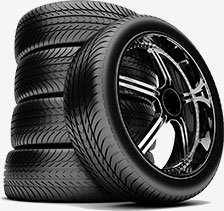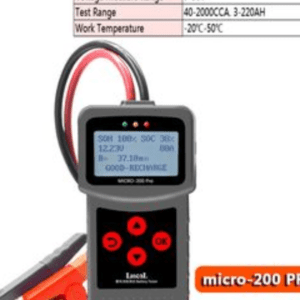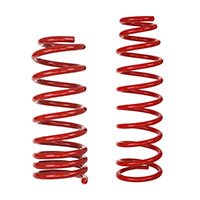How to read oil pressure gauge in a car
How to read oil pressure gauge in a car
How to read oil pressure gauge in a car
Let me start by asking you, how well do you know about your car’s motor oil? Maybe you already know the difference between conventional and synthetic oil and why it’s important to have regular oil changes. But how about your oil pressure gauge?
Note that the oil pressure gauge is one of your car’s most important instruments. However, it serves as an early warning system for all sorts of potentially expensive problems. But do you know how to read it?
This oil pressure gauge in your car’s dashboard informs you more than just the level of oil in your engine. Oil pressure gauge also indicates the general health of your engine. Note that your car’s engine can suffer significant damage if the oil pressure is too high or too low. Meaning that the oil pressure gauge should not just be read occasionally but should be monitored regularly.
How Do The Oil Pressure Gauge Works?
You should know that the inner workings of an oil pressure gauge depends in large part on the type: which are electric or mechanical. The mechanical gauge makes use of a spring that is affected by the pressure of the oil. Like a coiled tube, called a bulb, attaches to the oil pressure gauge’s outer casing and link at the bottom of the needle.
The oil is fed into the bulb under pressure. This is the same in the vehicle engine, from a supply pipe that causes the bulb to attempt to straighten. However, this pressure is what moves the oil pressure needle on your dashboard showing the oil pressure level in the engine.
This means that an electric gauge uses a sending unit and a circuit to send electric signals to the gauge via a wire-wound coil. But these parts allow the system to alter the indicator needle to show the correct pressure. While the oil enters the end of the sensor and pushes against a diaphragm. This moves the wiper inside the sensor up and down a resistance blade, which creates the signal that moves the needle in the gauge.
Though some vehicles use an oil warning light instead of an oil pressure gauge. This means that the warning light connects to a sensor that uses a simple on/off switch which reads the oil pressure through a diaphragm attached to the engine.
Below are the two types of gauges:
- Electric gauges
- Mechanical gauges
- The Electric Oil Pressure Gauges
The electric oil pressure gauges are available in most modern cars. These electric gauges are supplied from one of the many wires that are behind your vehicle’s dashboard. There are currents flowing through a coil and measures resistance in the instrument’s return wire.
But this resistance corresponds to oil pressure. The electric gauges are typically easier to integrate into modern circuits. This is one reason they’re installed in the majority of modern cars.
- The Mechanical Oil Pressure Gauges
The mechanical gauges use pipes instead of wires. It creates what some technicians think to be a more trustworthy reading, however, it also poses an increased risk. So instead of measuring resistance with electrical currents, the mechanical gauges funnel oil into small pipes at the same pressure it flows in the engine.
Meaning, if anything punctures the oil pipe, it could start spewing oil at engine pressure. And because of this, the mechanical gauges can require more attention and maintenance than electric gauges. https://kctimoauto.com/what-is-the-importance-of-regular-car-maintenance/
https://kctimoauto.com/what-is-the-importance-of-regular-car-maintenance/
 https://kctimoauto.com/what-is-the-importance-of-regular-car-maintenance/
https://kctimoauto.com/what-is-the-importance-of-regular-car-maintenance/
HERE IS HOW TO READ OIL PRESSURE GAUGE IN CAR
An oil pressure gauges in cars look like most indicators on your dashboard. You’ll find a label (typically “OIL”), numbers (ranging between 1-80 or 1-100), and a dial with an indicator needle. But instead of numbers, some vehicles use “L” and “H” to indicate high or low pressure. So for a baseline reading, check your owner’s manual for the manufacturer’s recommendation.
Please note: Almost every vehicle has a system for monitoring oil pressure, but not all vehicles have oil pressure gauges on their dashboard. This really depends on your car make and model.
The Zero Reading
Normally, this can only be like this when the vehicle is idling. But if this reading occurs at higher speeds, it could mean one of three things:
- The oil level is low
- The gauge is faulty
- The oil pump (or its drive) is broken.
However, just switch the engine off and get your engine inspected as soon as possible. But if your oil is actually empty, fill it up before taking your car into any nearest mechanic shop.
The Low Reading
Whenever your oil pressure gauge consistently reads a lower number while the vehicle is idling (typically below 20 or in the lower quarter of the gauge) get it examined. This could indicate a problem with the gauge (like a leak in a mechanical gauge), sometimes it means an engine component has worn down, creating a drop in oil pressure. But by fixing or replacing the part quickly, you could avoid major and expensive engine damage down the line.
The High Reading
Note that the needle on the pressure gauge must settle at the midpoint after the car has been running for about 20 minutes. But if it settles toward the top of the gauge, it could be indicating high oil pressure. However, since high pressure could cause the oil filter to burst, switch off your engine as soon as you notice this reading.
Conclusion on how to read oil pressure gauge in a car
Their duties are to send you vital information before they end up costing you significant time and money. But in case your oil warning light is on or you get a reading on your oil pressure gauge, contact a technician for a full-service oil change.
Note that this inspection can help diagnose your car’s oil pressure gauge issues. So ensure you schedule an oil change appointment with your nearest mechanic today. This can help you save more money and time too!




















